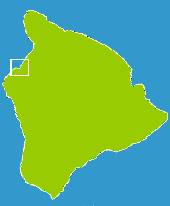
The Waikoloa Marriott Beach Resort as seen from the beach on the Kohala Coast.
Ken burned and blistered his feet walking barefoot down this path from our room
to the beach on the first day. He learned quickly and acquired a pair of sandals.
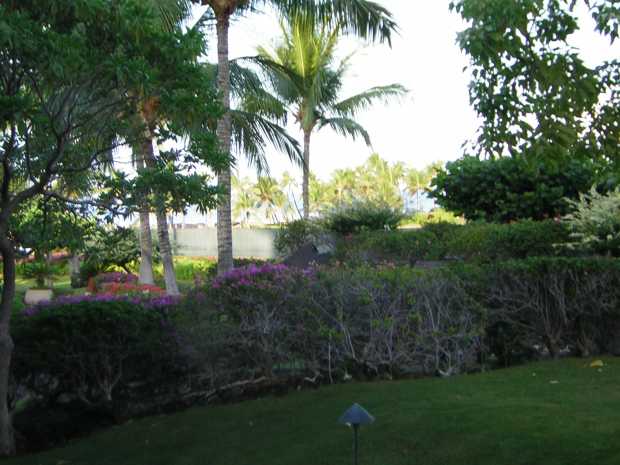
The view toward the beach from our ground-floor room at the Marriott.
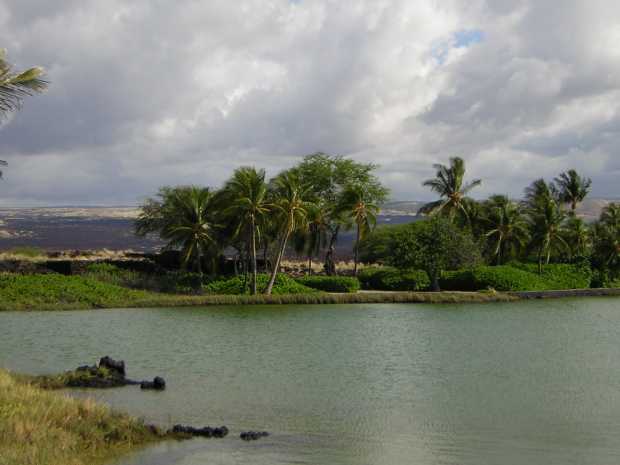
The fishpond at the Marriott: a natural pond just behind the beach, reserved in
ancient times to the use of Hawaiian royalty only. Behind the palms is the aa
lava and scrub grass desert that covers much of the northwest portion of the
Big Island.
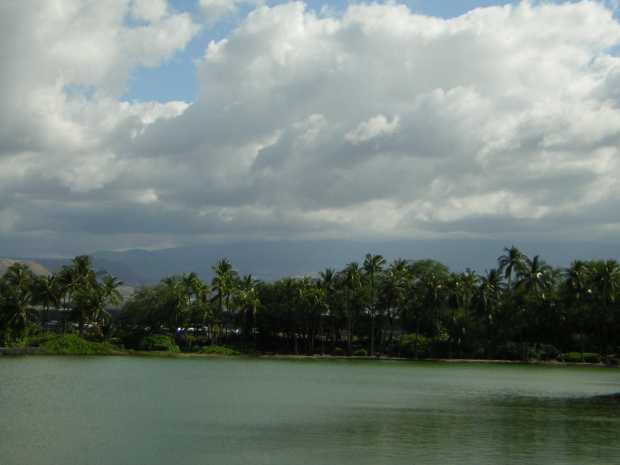
The same fishpond, looking more toward the southeast. The rising land behind the
palms is probably Hualalai Mountain, which, at a height of over 8,200 feet, is
still only the third-highest spot on the island.
You Are Here
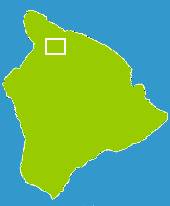
|
The Road to Waimea
|
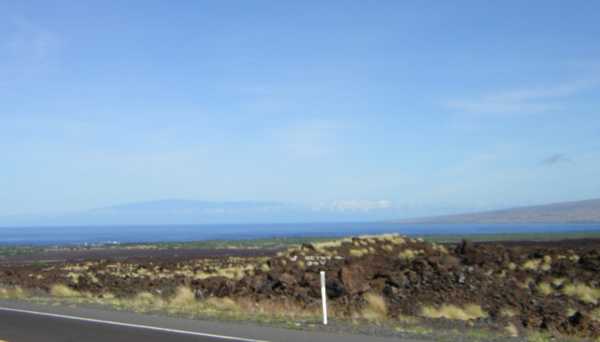
Looking north-northwest from Waikoloa village. In the foreground, just above the
white stake, is a blurry example of the local "rock graffitti", made by placing chunks
of white coral on the black aa lava to form pictures and messages. The mountain
rising dimly beyond the bay is Kohala, the northern peninsula of the Big Island.
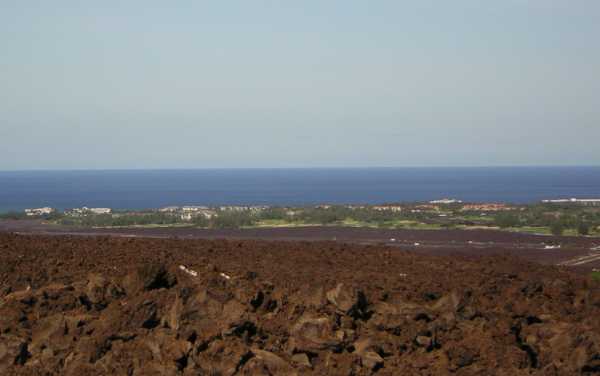
Looking down from Waikoloa Village to the Kohala Coast. The Marriott is one of
the building clusters to the left.
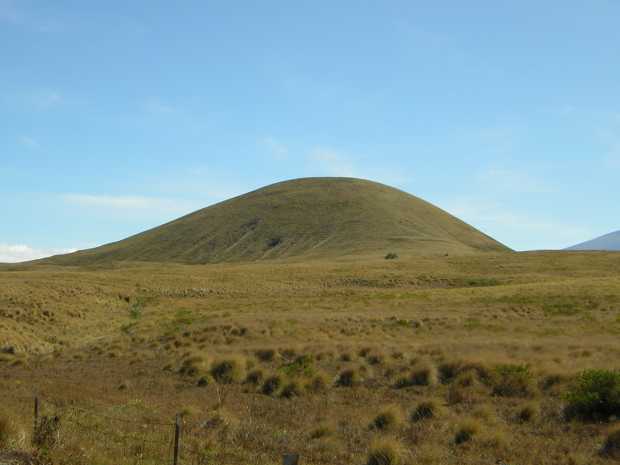
One of many examples of small ancient extinct volcano cones that can be found all
over the arid northern uplands of the Big Island. Most of this land is cattle pasture.
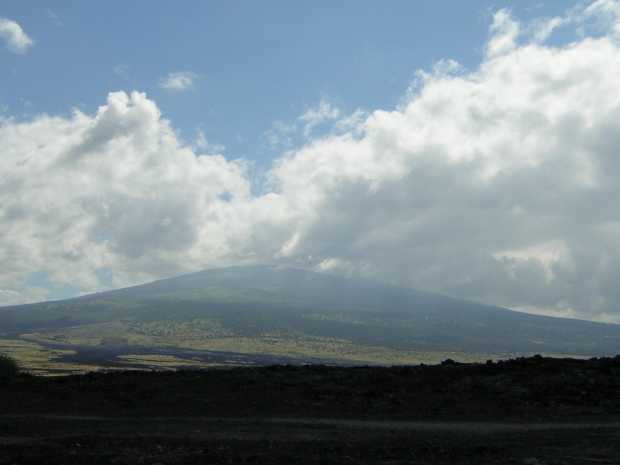
Looking south toward Mauna Loa from Waikoloa Village.
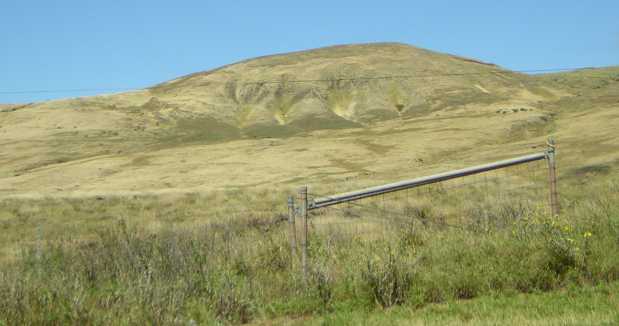
Looking toward the town of Waimea from a few miles east.
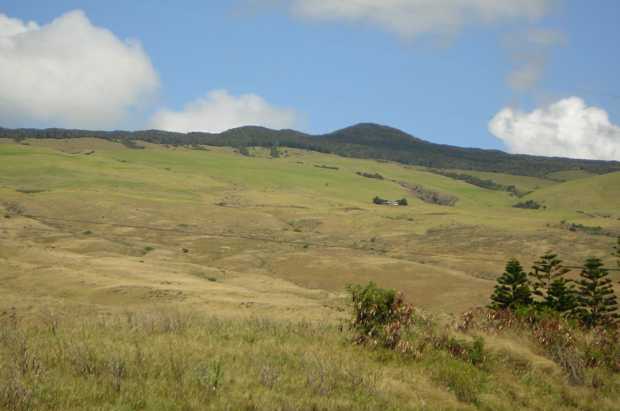
From the east-west portion of Rte. 19 in the north of the Big Island, on the way to
Waimea. This is a good illustration of Hawaiian micro climates. The land in the
foreground is too hot and dry to support anything more than tough grass, but just a
few miles away and a couple thousand feet up, forests prosper in a cooler, rainier zone.
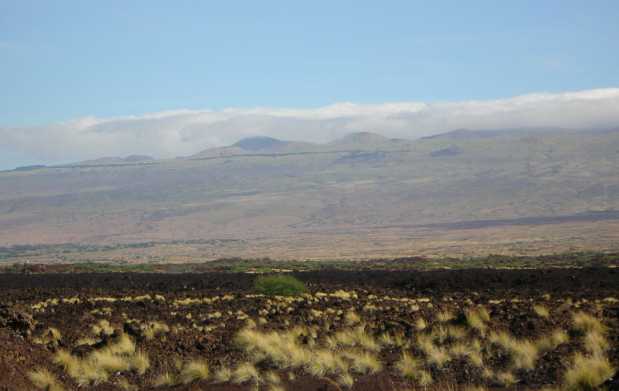
Looking north toward Kohala Mountain from the Waikoloa Village region.
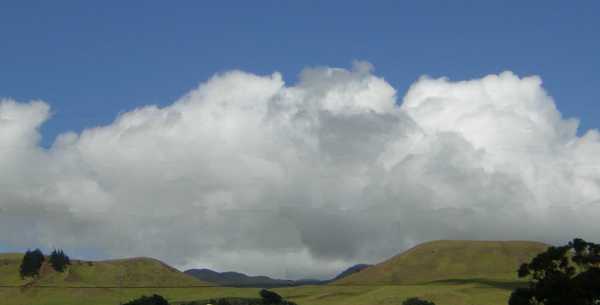
This was taken from the parking lot of a shopping center in Waimea; it's been very
heavily retouched to remove a bunch of telephone and light poles and wires.

Another view from the same parking lot. I may eventually retouch this one also.
You Are Here
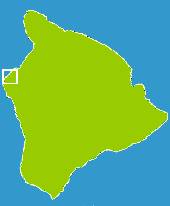
|
Mahaiula Bay
|

Mahaiula Bay, on the Kohala Coast a few miles north of Kona/Kailua. This is
in a state park, but the only way to get here is over an extremely nasty so-called
"road" through the lava fields. Bumping and zig-zagging along at 2 miles an hour, it
took 45 minutes, and help from a friendly "spotter" from the car ahead of us, to
negotiate the 1.5 miles from Rte. 19 down to the parking lot. From there it was a
ten-minute walk to the beach you see here. We'd been looking for Makalawena Beach,
which is considered one of the best and least-known beaches on the Big Island,
and thought we'd found it. It turns out, though, that Makalawena Beach was further
north (in the direction you're looking).
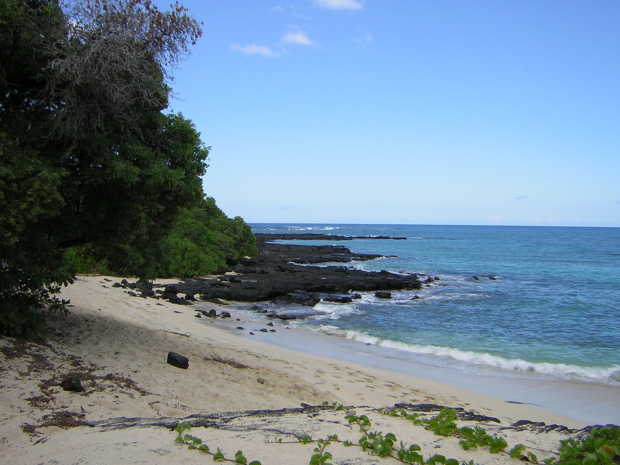
Another view of Mahaiula Bay, taken from the area where we swam and
looking back toward where the path to the parking lot begins.
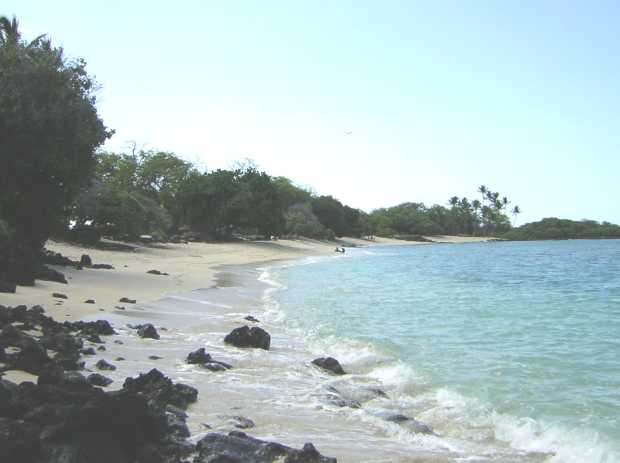
Mahaiula Bay again, from the far end looking back toward the path to the parking
lot. To the left at this point, among the trees, there are a few large two-story houses
with no glass or screen in their windows. They came with the land that the owners
donated to the state for the park. The real Makalawena Beach lies a bit north of them.
You Are Here
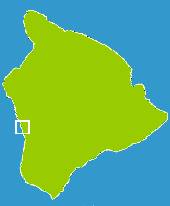
|
Pu'uhonua O Honaunau (Place of Refuge)
|
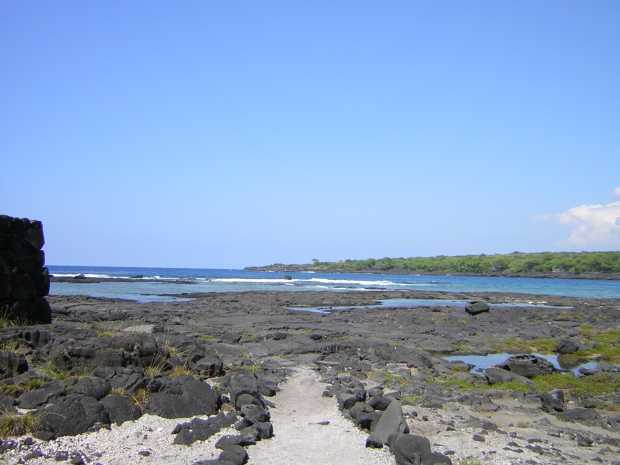
Taken at the Place of Refuge, south of Captain Cook.

Also at the Place of Refuge. I think these carvings are well-known; certainly I've
seen pictures of them before. There were many other fascinating things at this
place, but unfortunately, my camera batteries died after I got these two pictures.
